




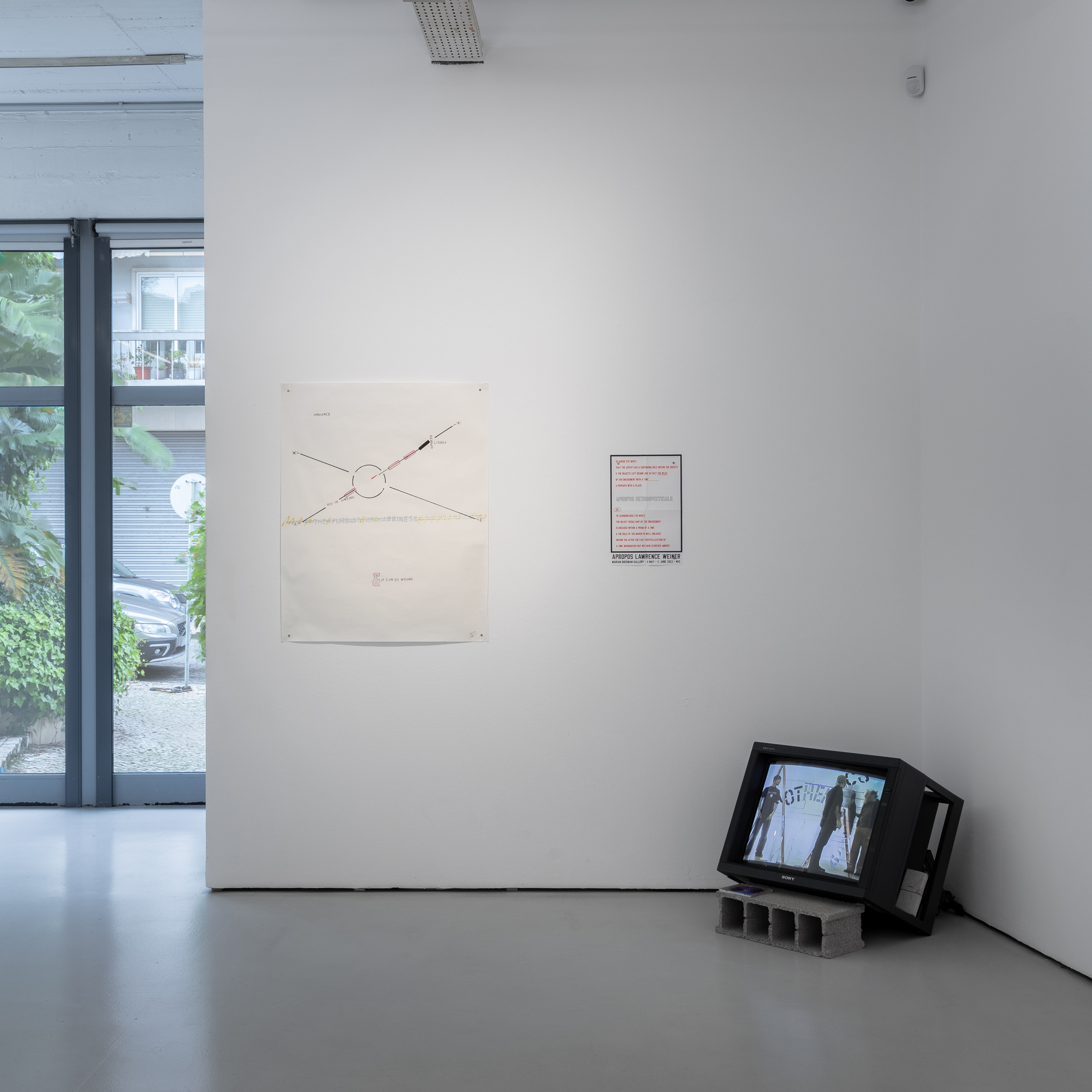
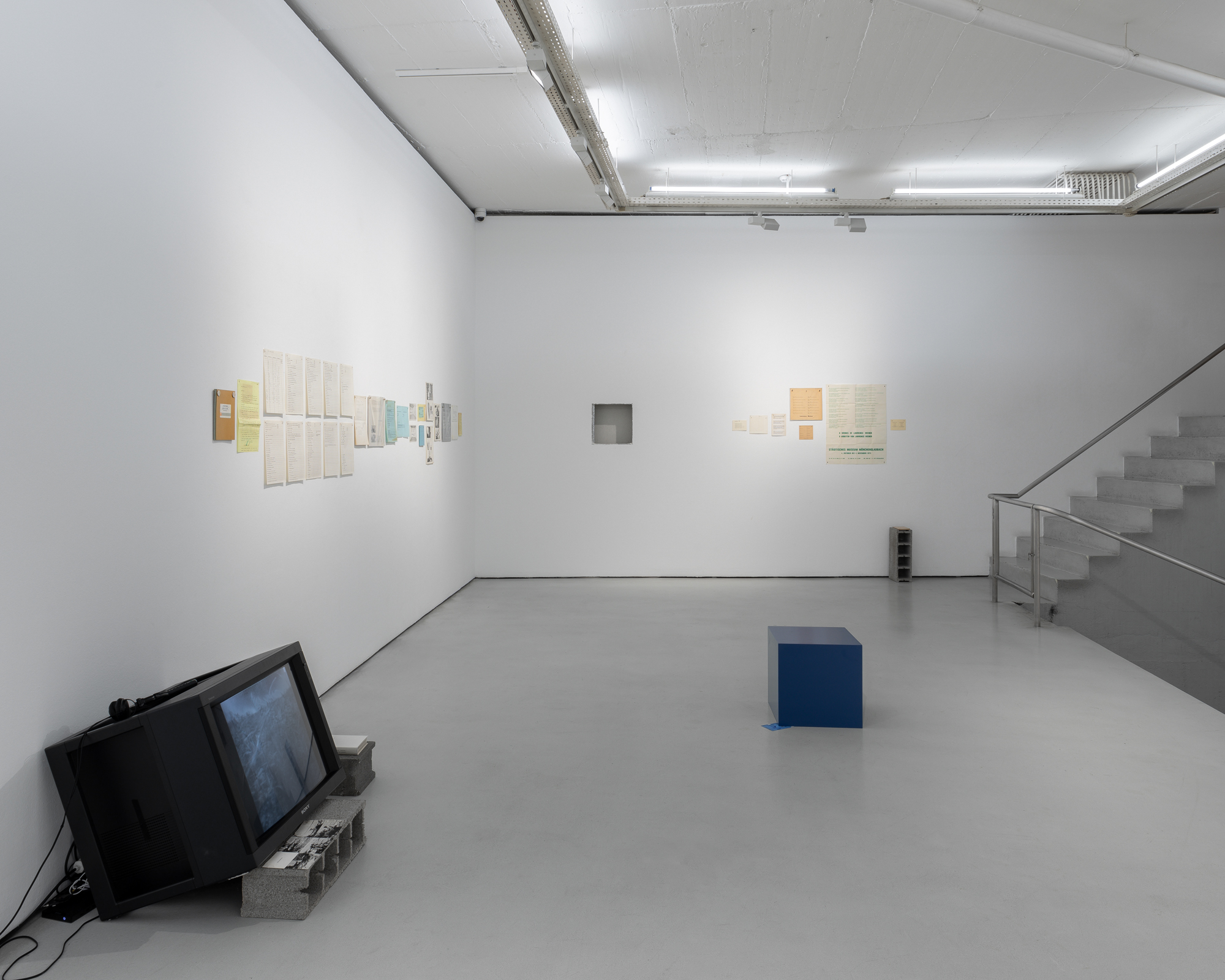

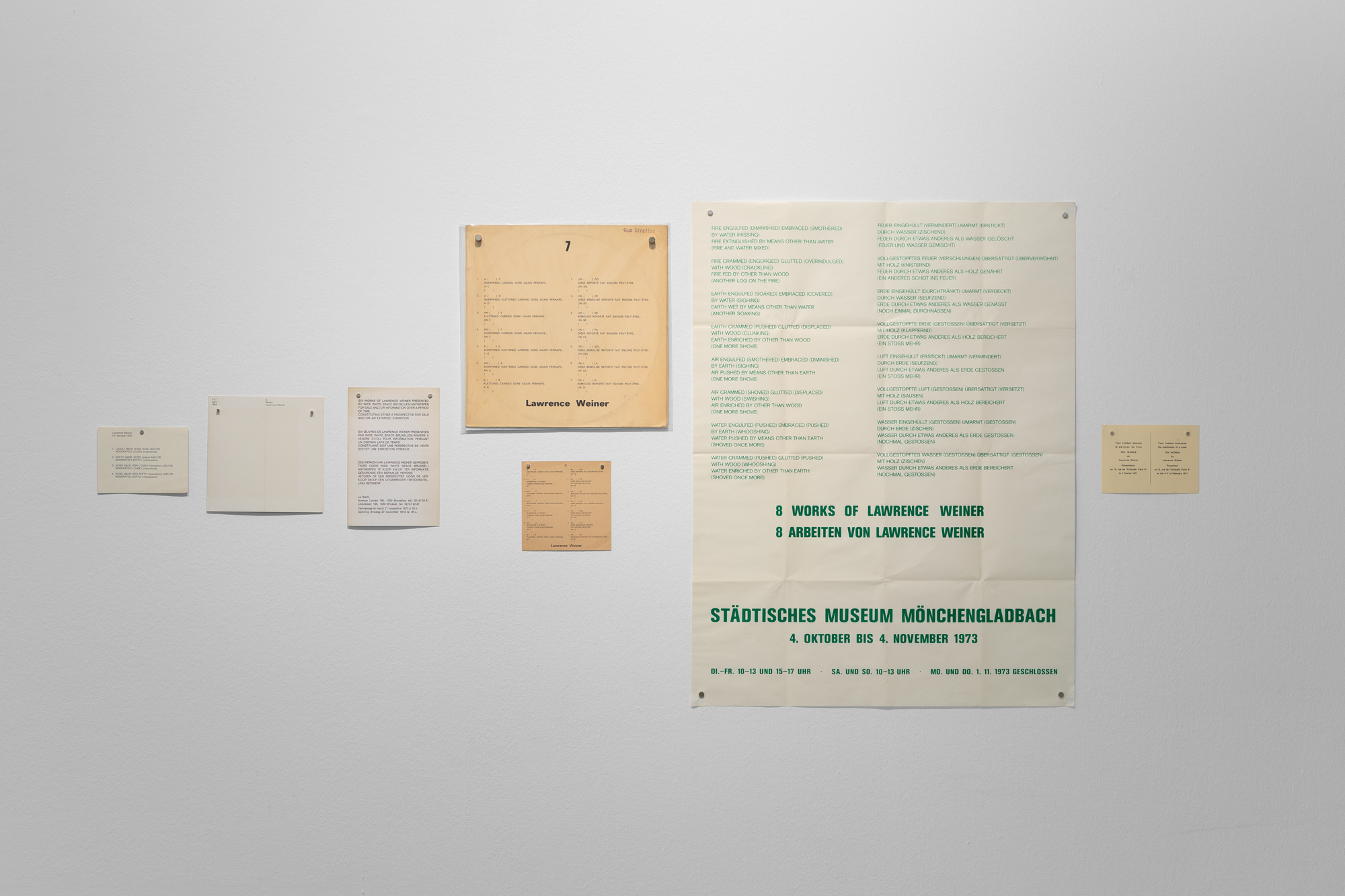


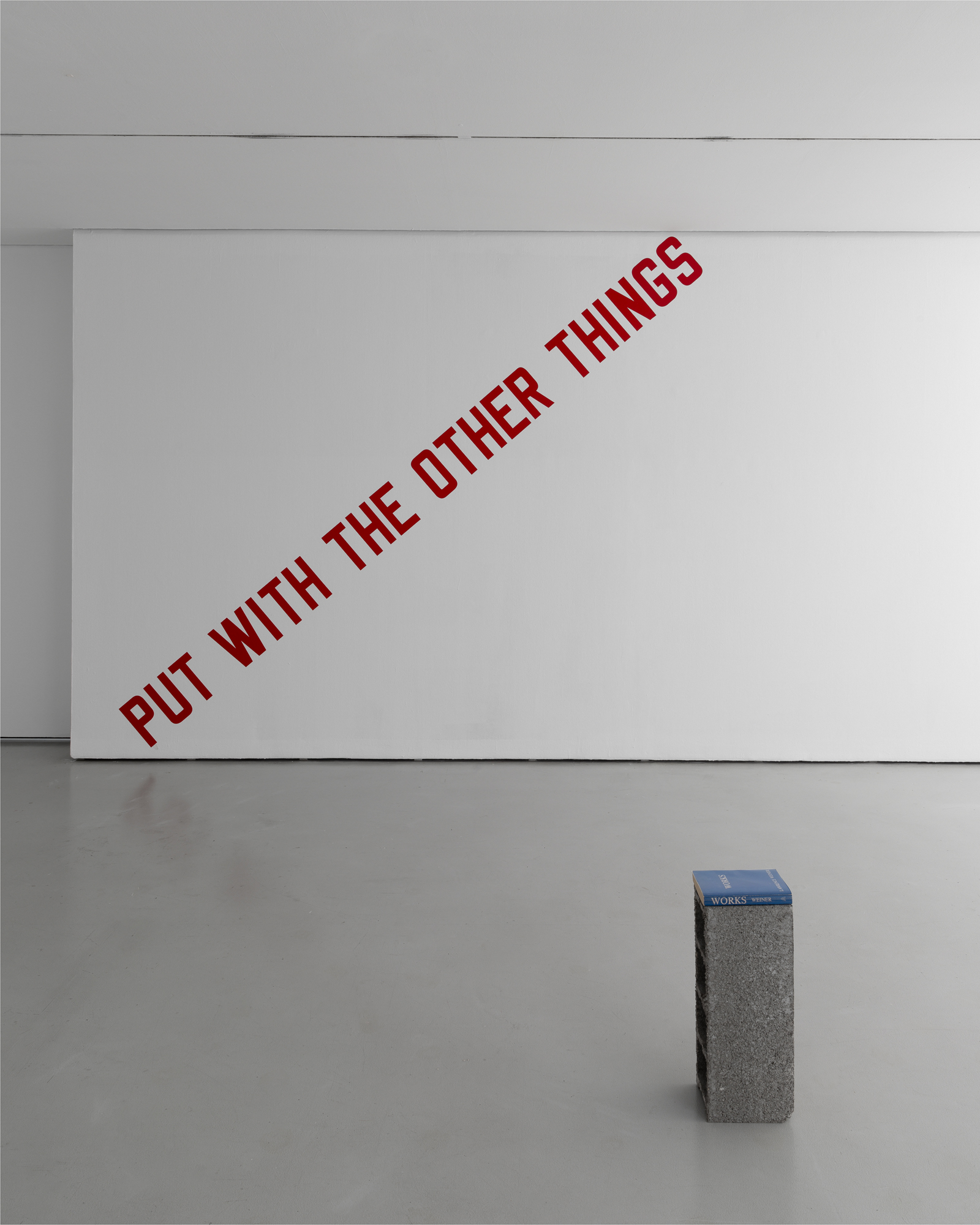
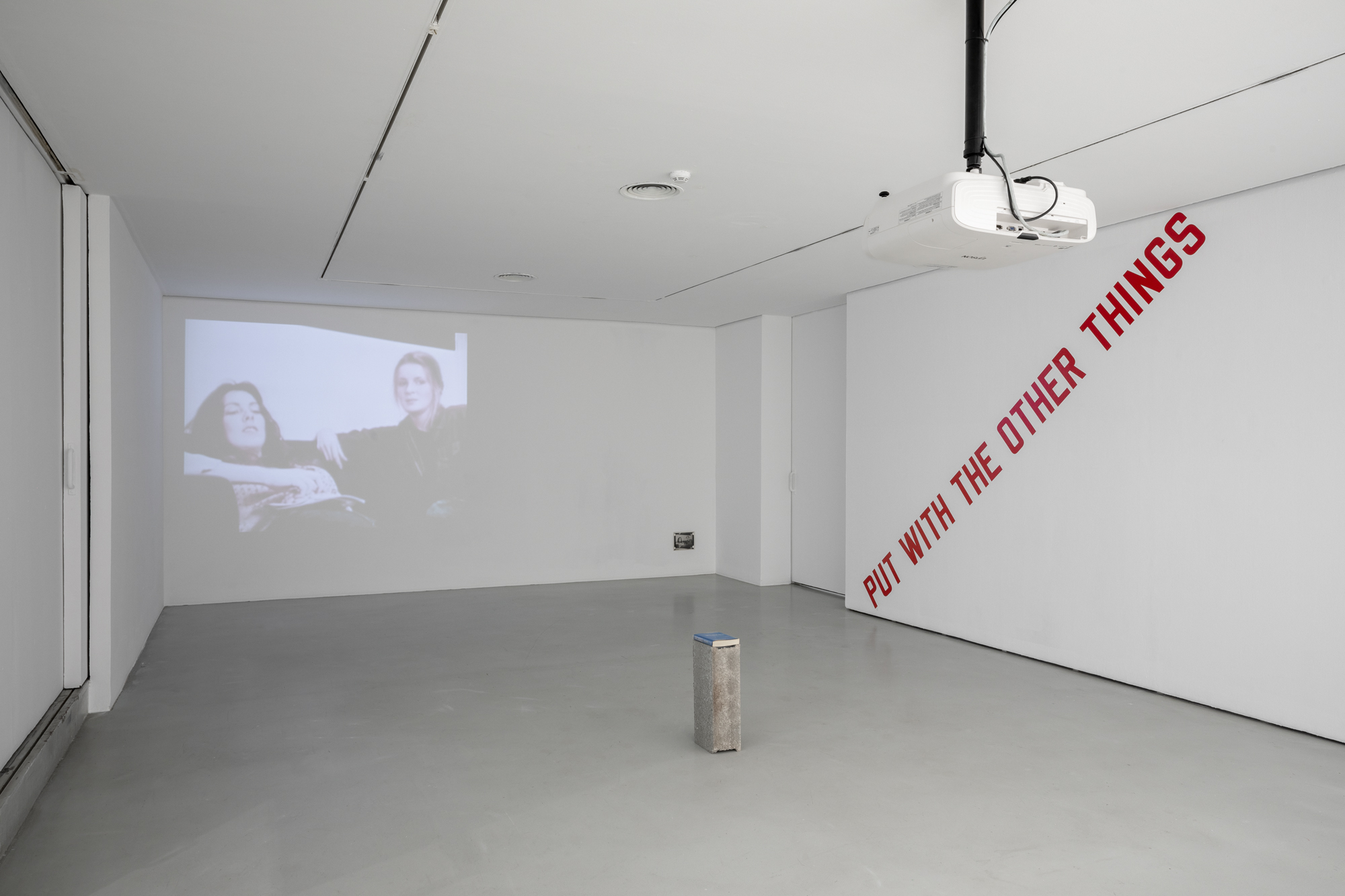
© Vasco Stocker Vilhena
Jezebel in later biblical traditions emerges as the embodiment of everything
that is reprehensible in the other in the woman in the feminine in the queen
in the whore but I find her an entirely sympathetic character
I’ve always loved Jezebel.
- Lawrence Weiner, in Wild Blue Yonder (2002)
Common interpretations often describe Jezebel as the queen who dominates her husband, persuading him to do evil. These interpretations have been reassessed over time. Reflecting on the character, Lawrence Weiner did not align himself with simplistic views. He preferred to emphasize the ambiguity and possible divergences between subjective interpretations.
Interpretation has always been a human challenge and there are ancient accounts of this issue. It is no coincidence that the parable of the Tower of Babel – in which the language of the entire earth was confused – is one of the most well-known across different cultures. Jorge Luis Borges imagined the Library of Babel, alluding to “districts where young men prostrate themselves before books and barbarically kiss the pages, but cannot decipher a single letter.”1 Western philosophy has devoted itself to the subject and elevated hermeneutics to one of its central questions.
By adopting texts as his primary material, Lawrence Weiner brought this issue to the forefront of visual arts. His concern lies with the multiple possibilities that exist for concatenating symbols, which, once interpreted, lead to contingent and precarious meanings. There are no intrinsic meanings to each work. Literalness becomes key to dissemination: the same phrase, in different contexts, can be understood in distinct ways. But this is no longer the artist’s problem, whose polysemic and ingenious gesture is visually recorded in textual sculptures.
Ambiguity and polysemy are fertile grounds for many investigations. They may perhaps constitute the perfect soil for the expression of sensuality, in its most varied senses. Lawrence Weiner considered himself a sensual artist. Just as the polysemy of the symbols meticulously articulated in his sculptures, sensuality permeates his work, though it sometimes goes unnoticed by the public. It does not reveal itself only in explicit works: it is also inherent in the text sculptures, which allude to movement and dance, to ballet steps, and highlight the grace of a gesture - the title of a well-known work by the artist.
During an interview with Benjamin Buchloh, Lawrence Weiner declared: “I am a sensual artist. I am involved with the sensual relationships of materials. That seems to be the nature of art, and I don’t think curtailing that nature is going to make it any more rigorous per se, because essentially it is still about the communications of one human being’s observations to another human being with the intent of bringing about a change of state.”2 On another occasion, he said that “[o]ne of the hallmarks of art is its sensuality. There is a sensuality in all materials. There is certainly a sensuality between any relationship of one material to another. The acceptance of sensuality is a necessity, and its existence is not hedonistic, it’s just realistic.”3
This exhibition seeks to highlight these two aspects of Lawrence Weiner's work: the polysemy that arises from interpretation and sensuality. Both are revealed in different mediums: books, records, textual sculptures, videos, and ephemera. The starting point is the moraes barbosa collection (coleção moraes barbosa), which, in a rare occurrence for private collections, brings together these mediums in abundance and opens up various approaches to Lawrence Weiner's work.
Interpreting Jezebel is not merely a hermeneutic challenge. It is about embracing the mystery of human communication, the perspectives of each interpreter, and the sensuality that resides in the friction between viewpoints that set sail from the same harbors but navigate different oceans, toward the wild blue yonder.
Organized by:
Thiago Tannous
Pontogor
Joaquim Pedro
In partnership with:
coleção moraes barbosa
1. BORGES, Jorge Luis. La Biblioteca de Babel (The Library of Babel). Published both in El Jardín de senderos que se bifurcan (1941) and Ficciones (1944).
2. Published with the title “Art is not about Skill”: Benjamin Buchloh Interviews Lawrence Weiner On His Sensual Approach to Conceptual Art”. Available at: https://www.artspace.com/magazine/art_101/book_report/art-is-not-about-skill-benjamin-buchloh-interviews-lawrence-weiner-on-his-sensual-approach-to-54588
3. Lawrence Weiner by Marjorie Welish. BOMB Magazine, Winter 1996 Issue. Available at: https://bombmagazine.org/articles/1996/01/01/lawrence-weiner/